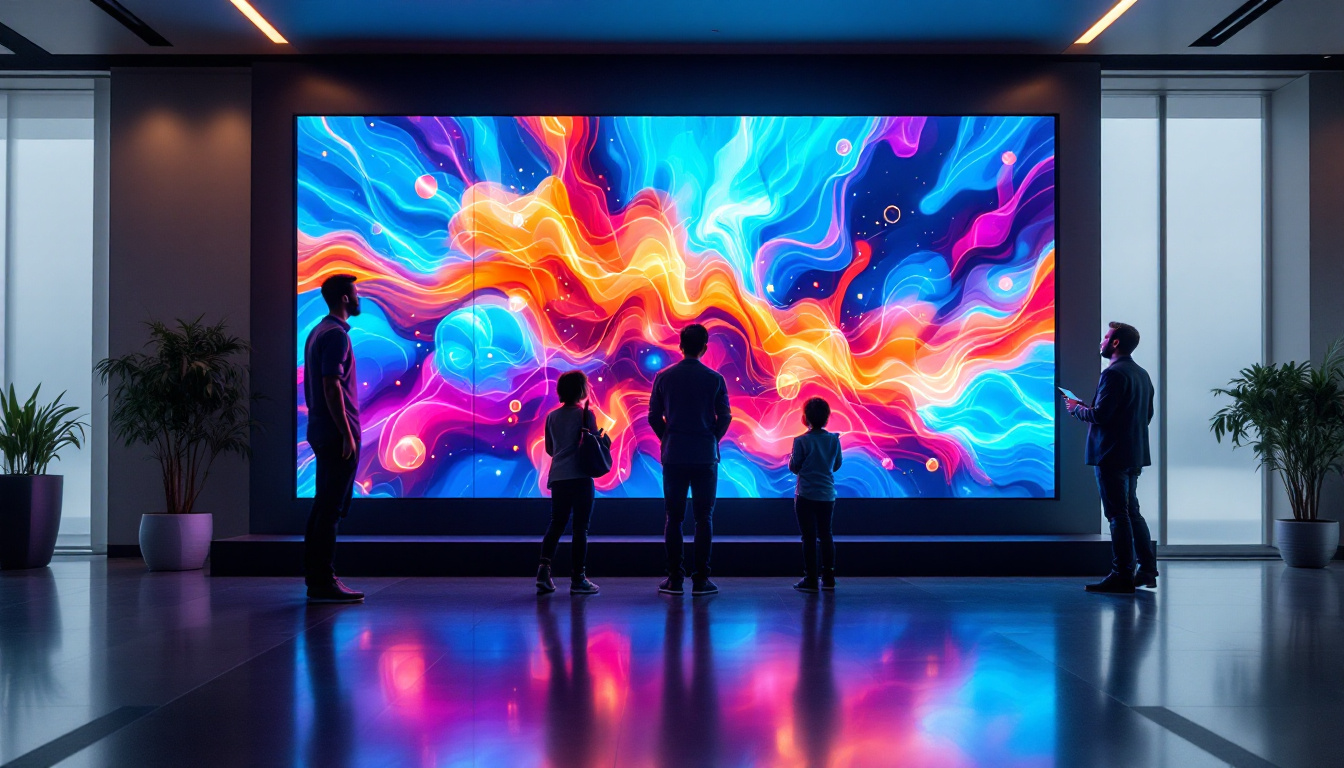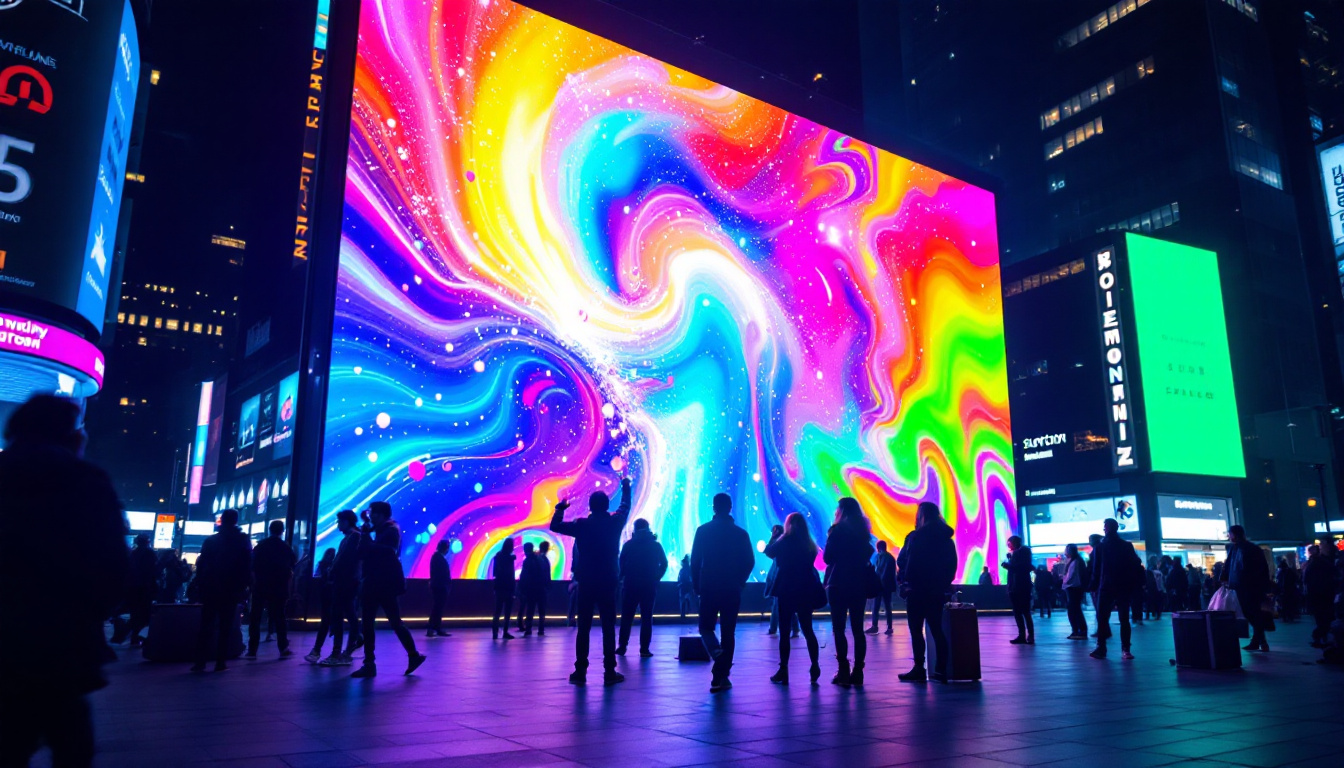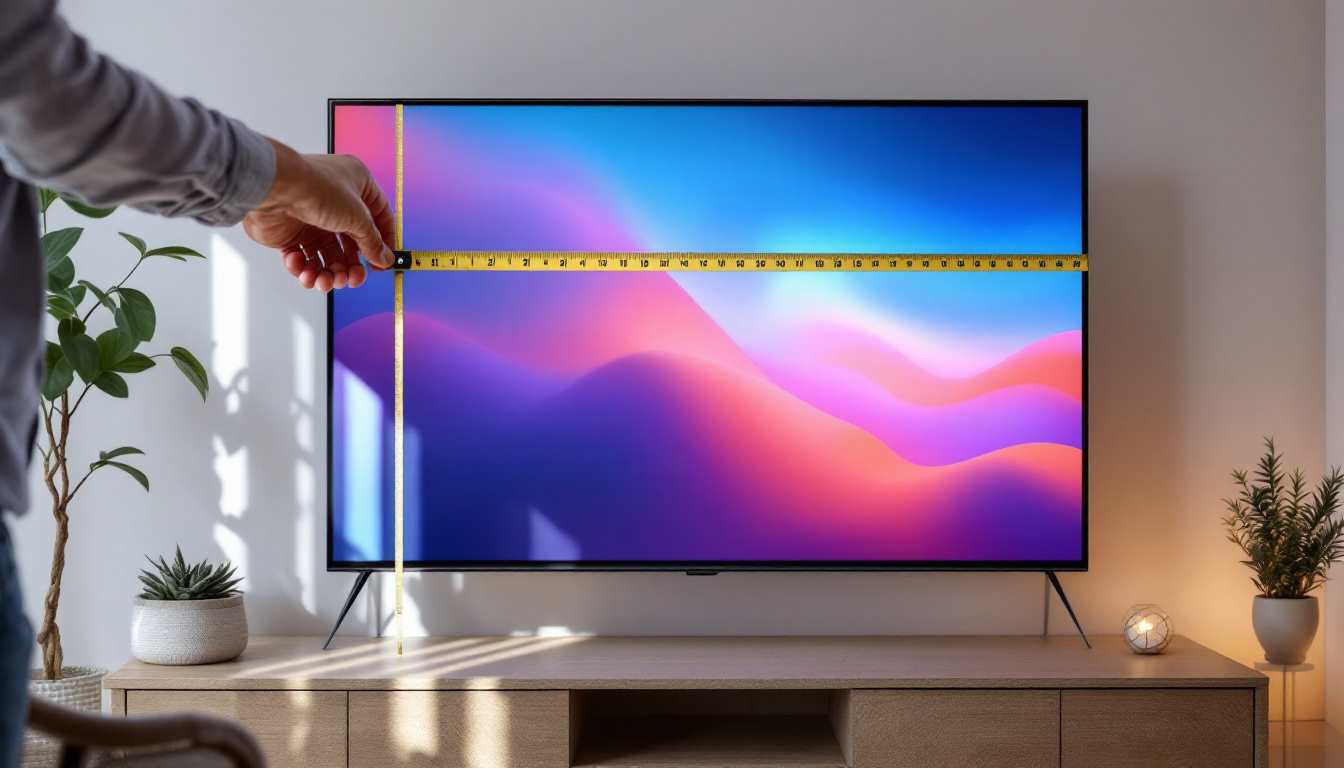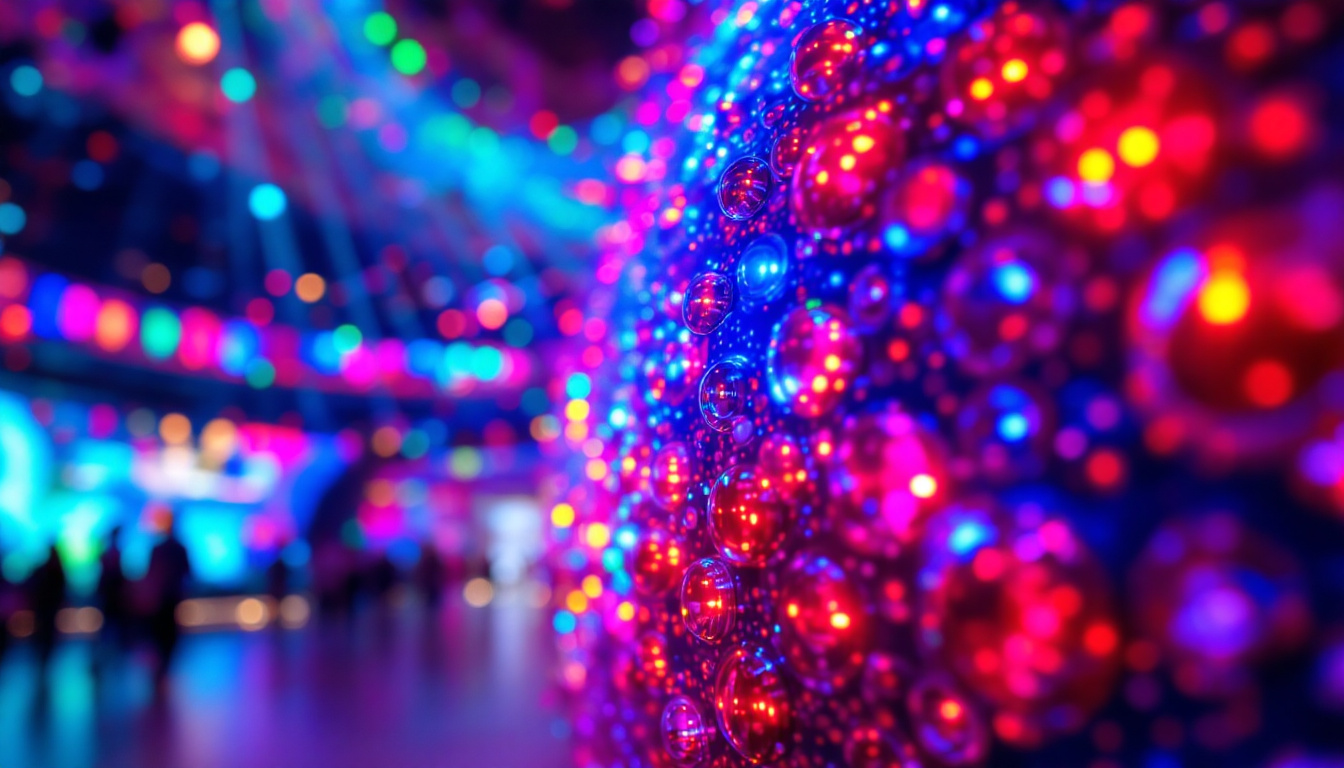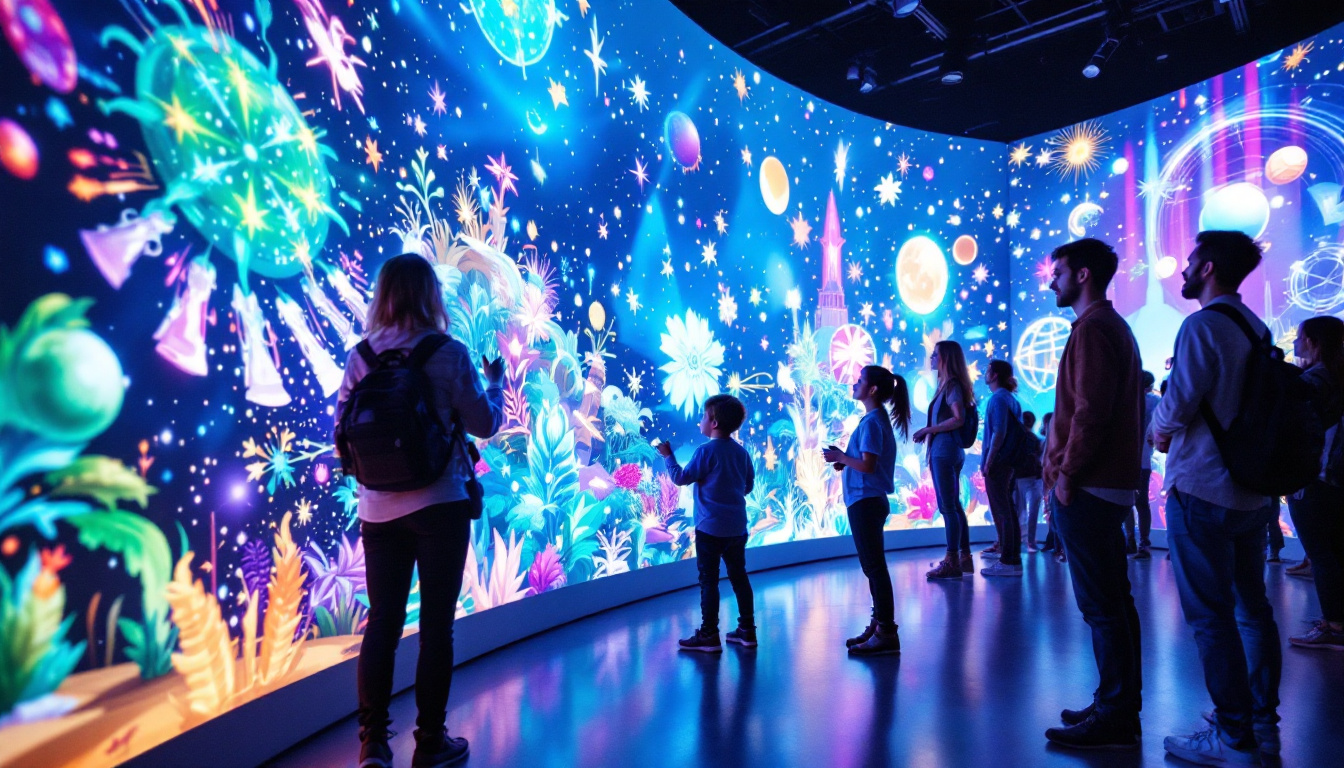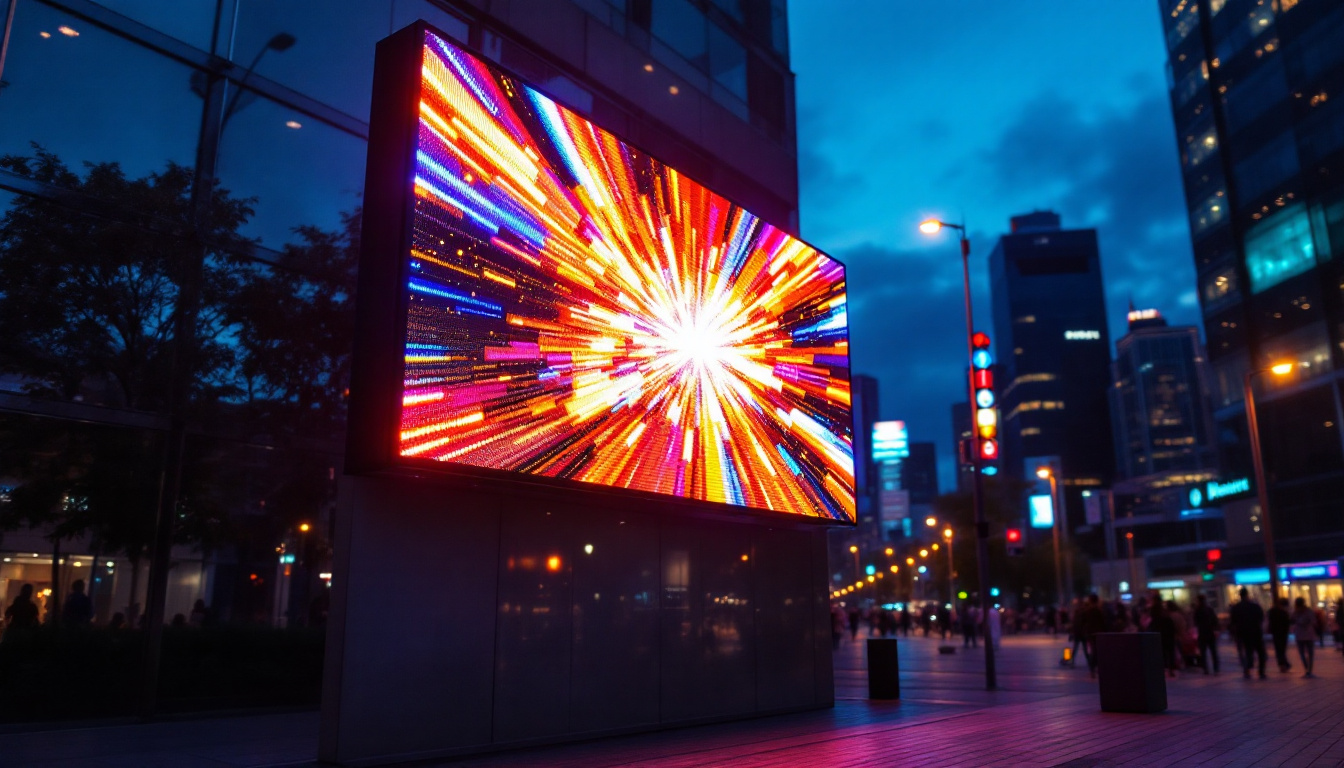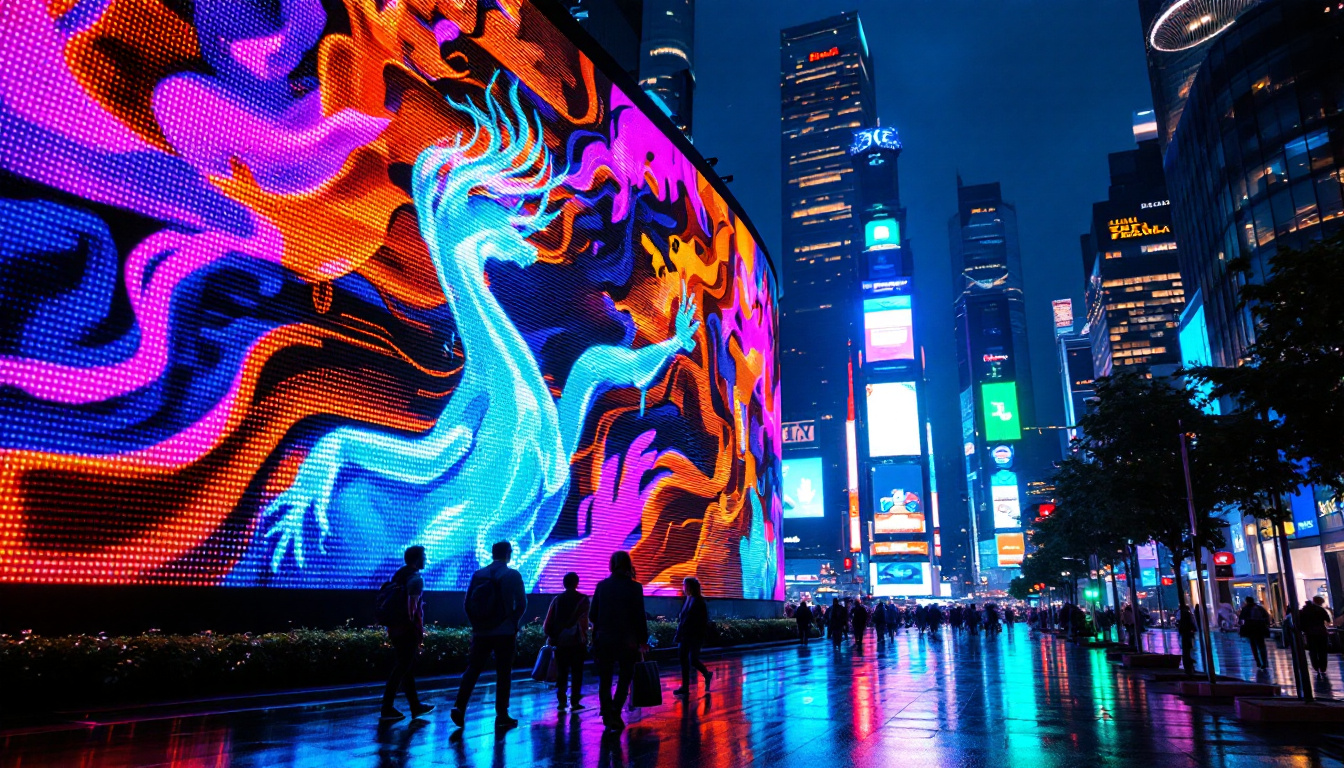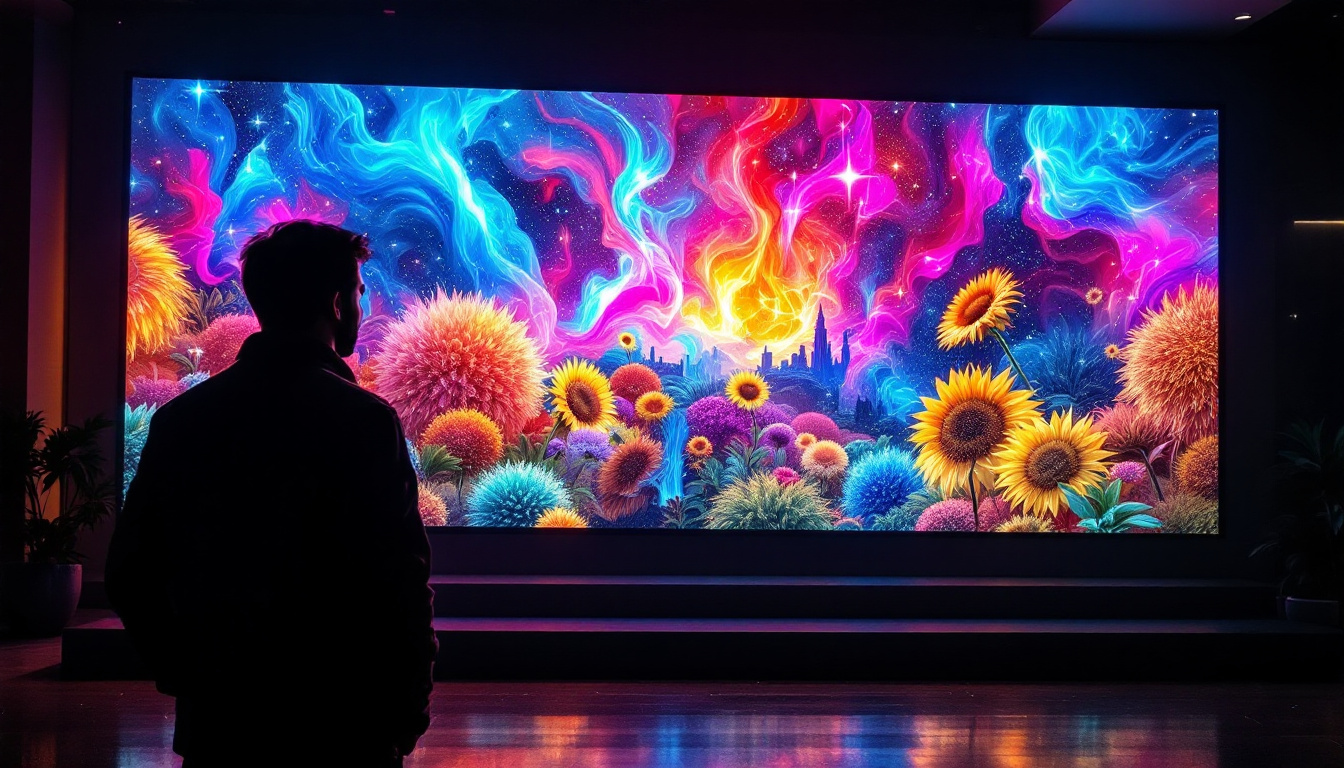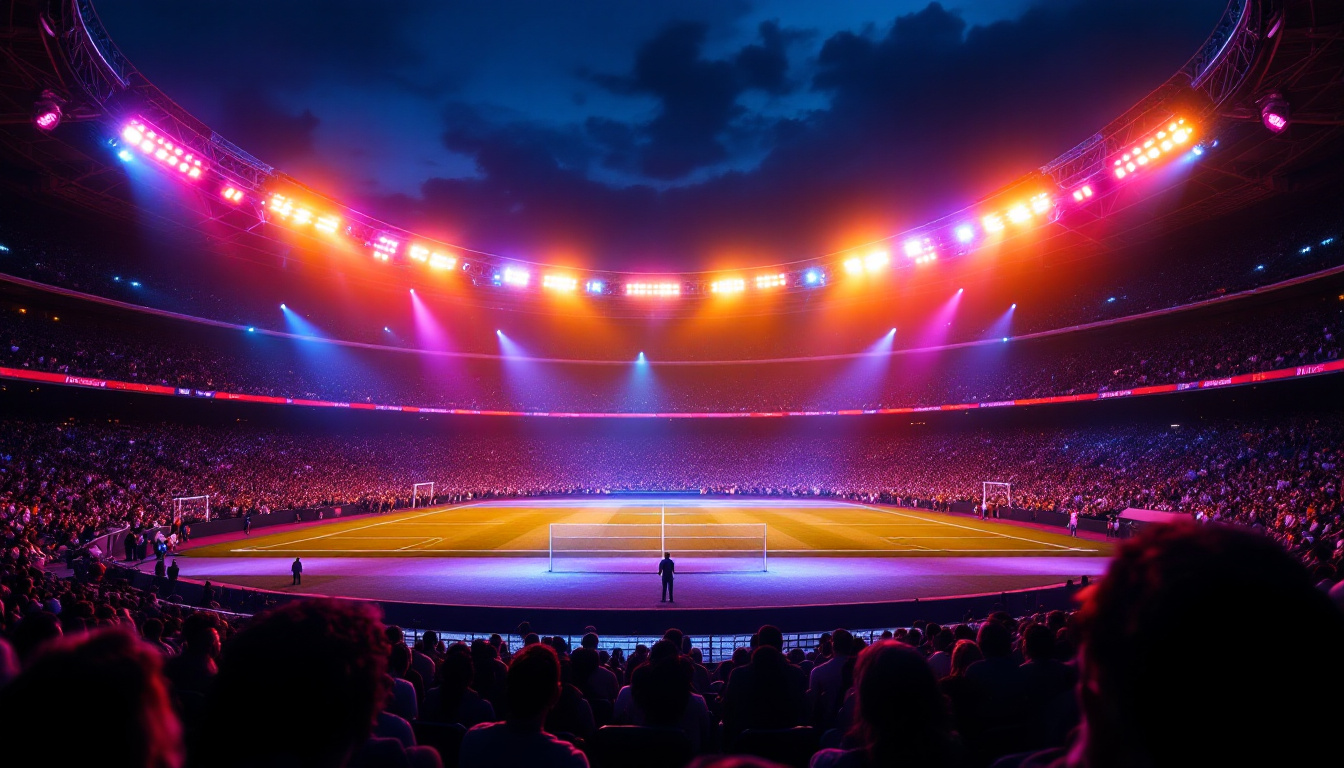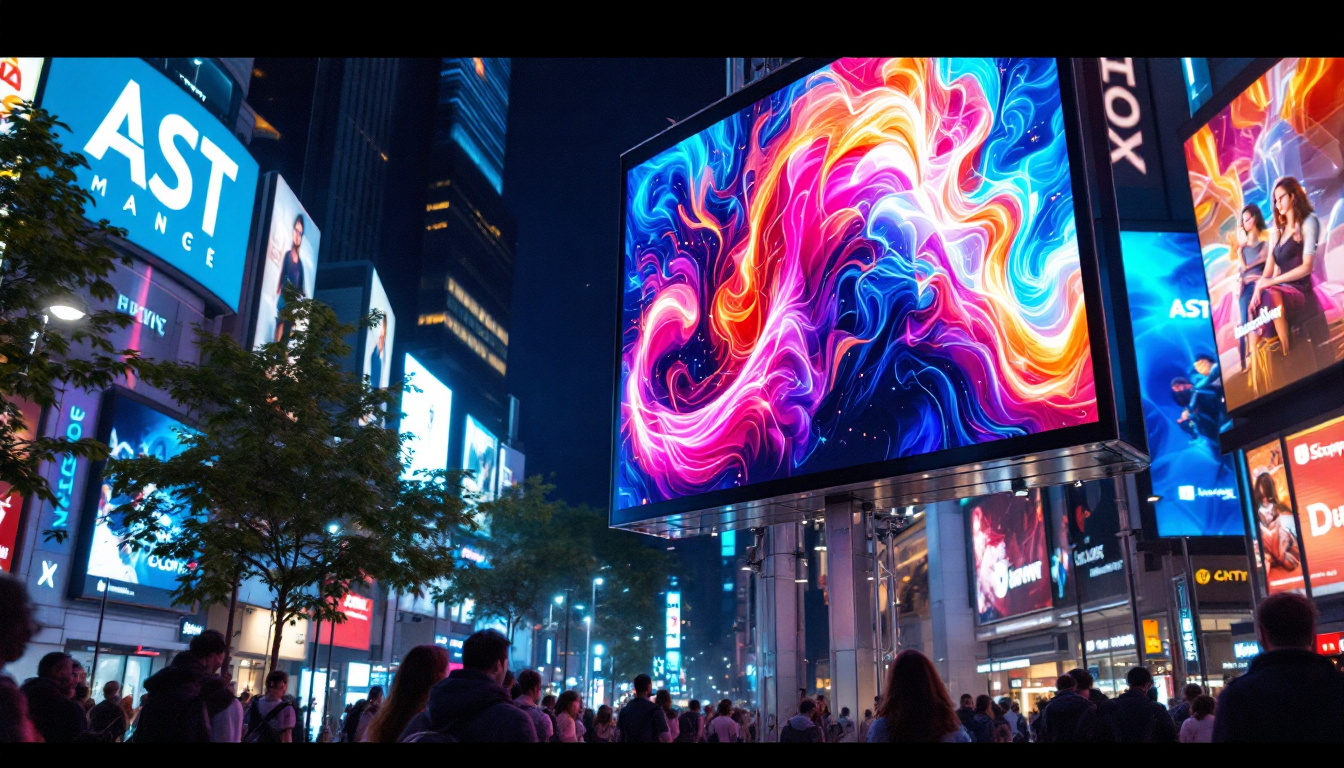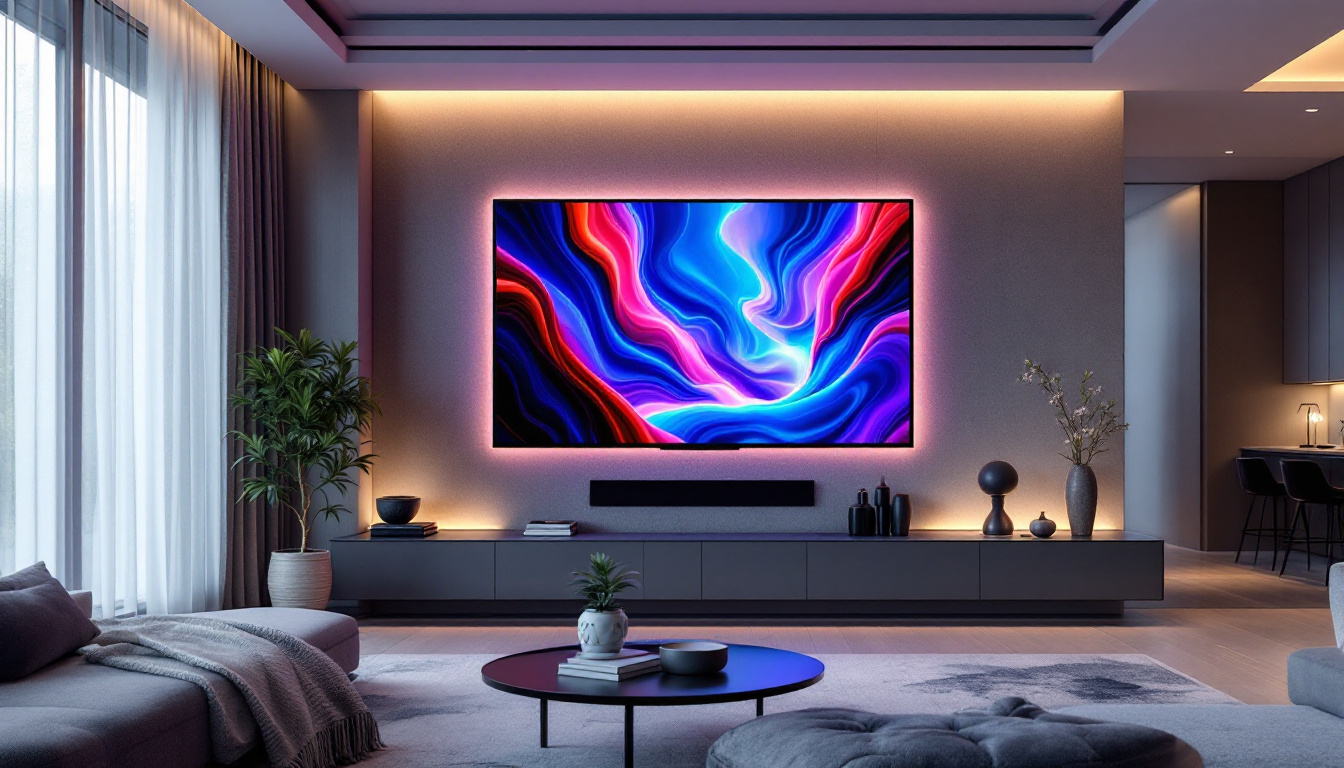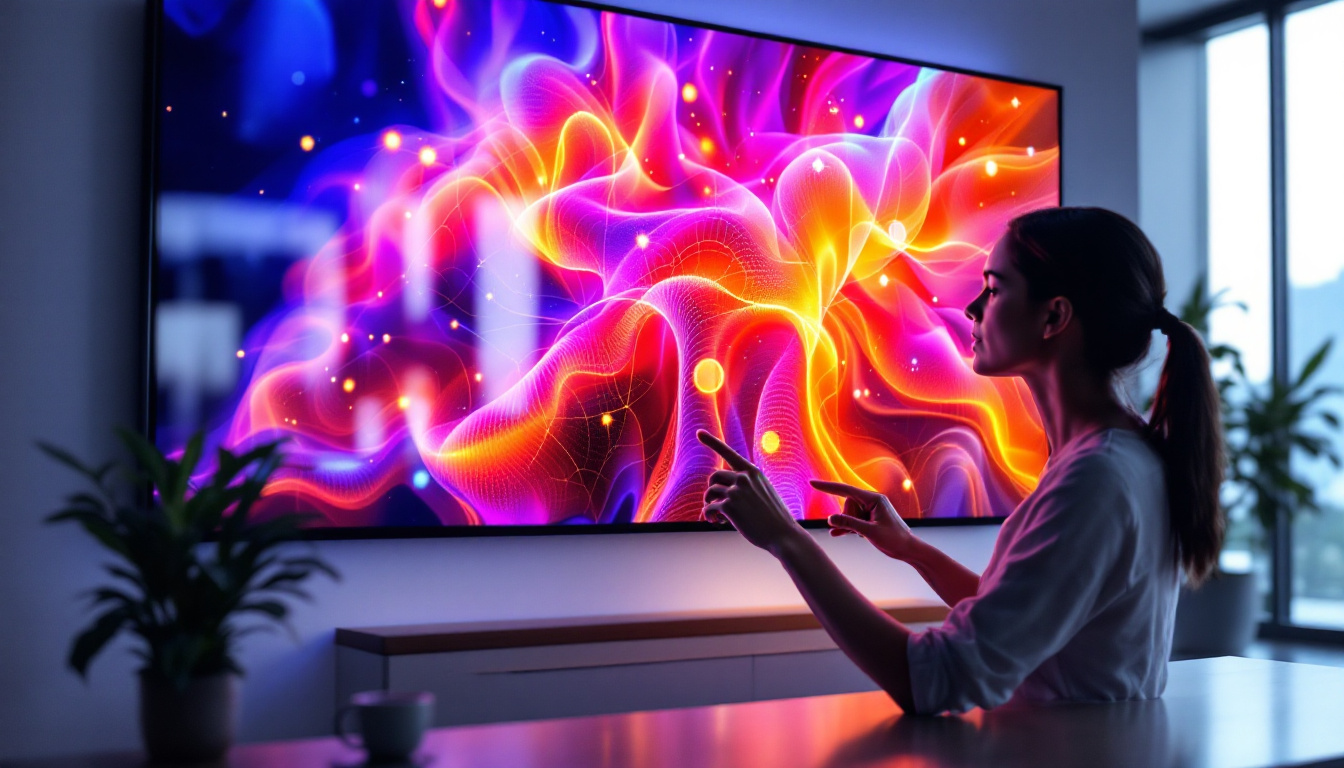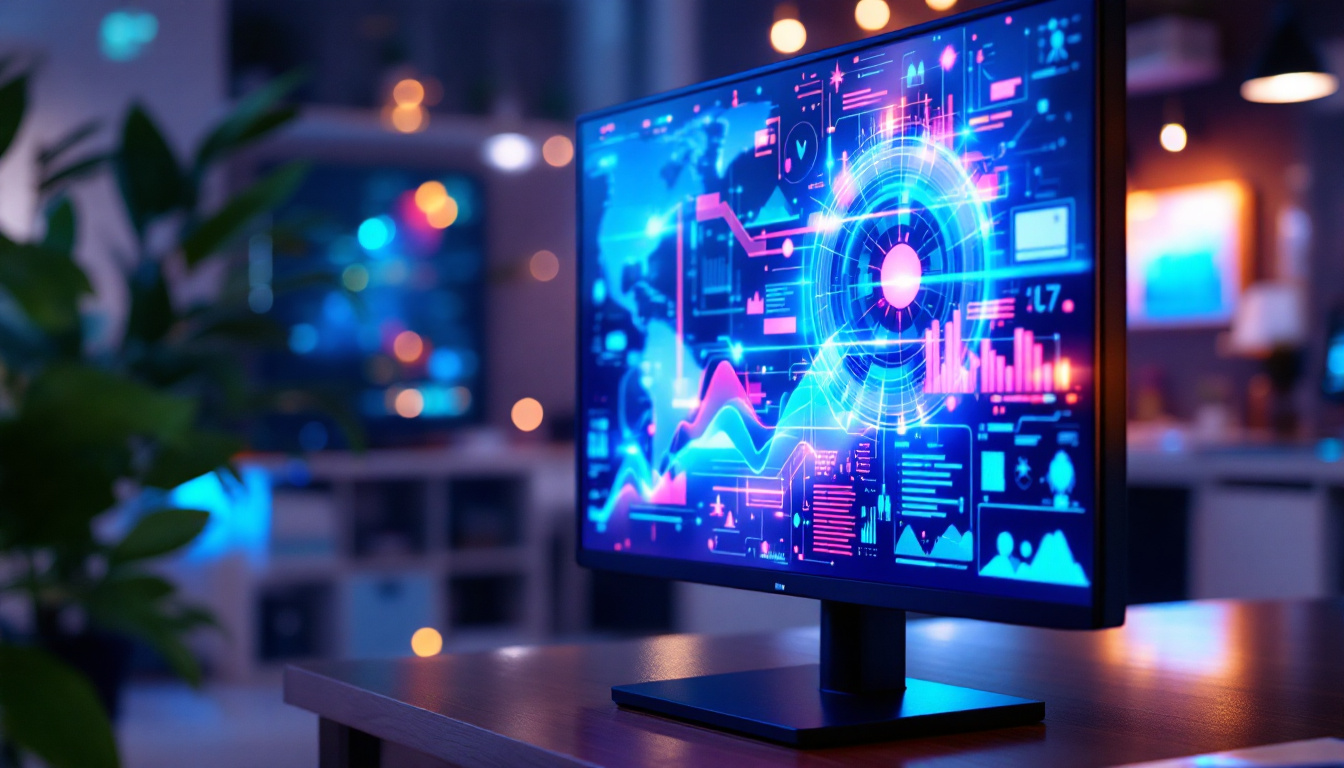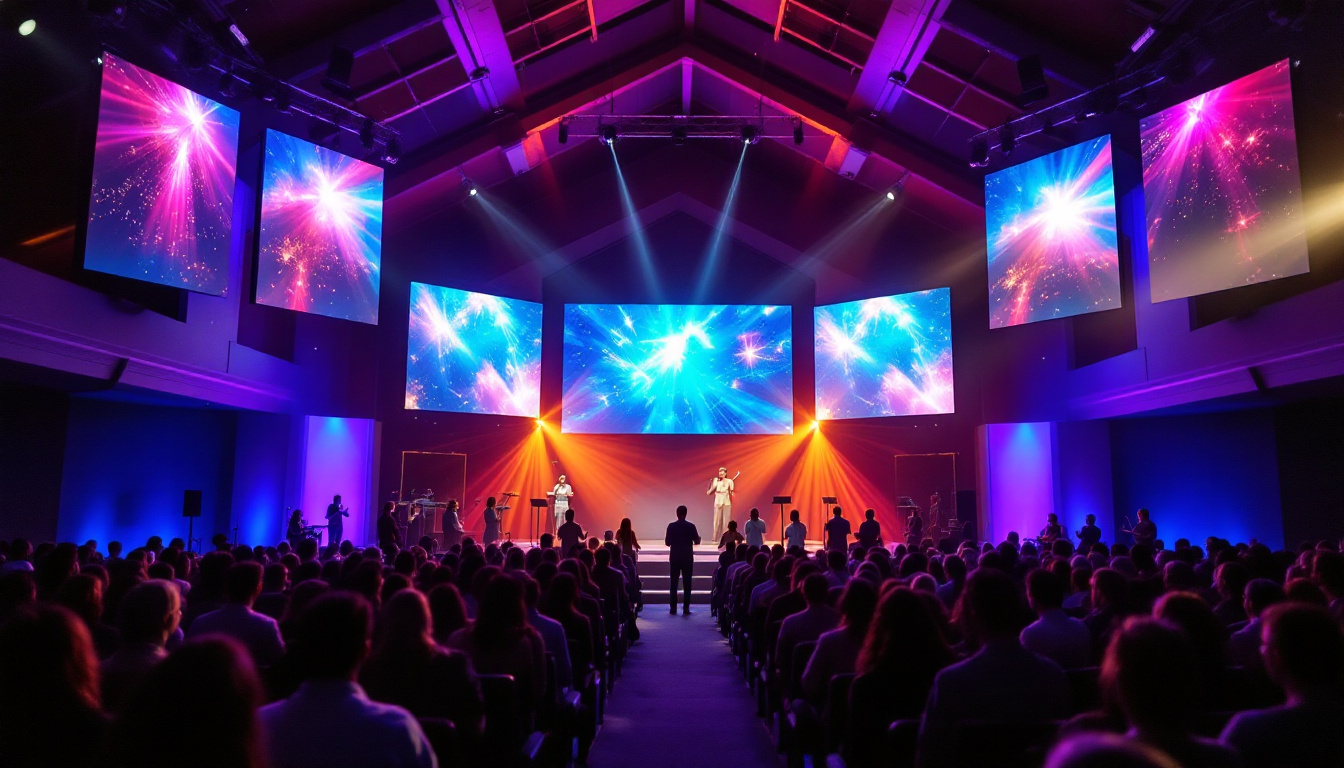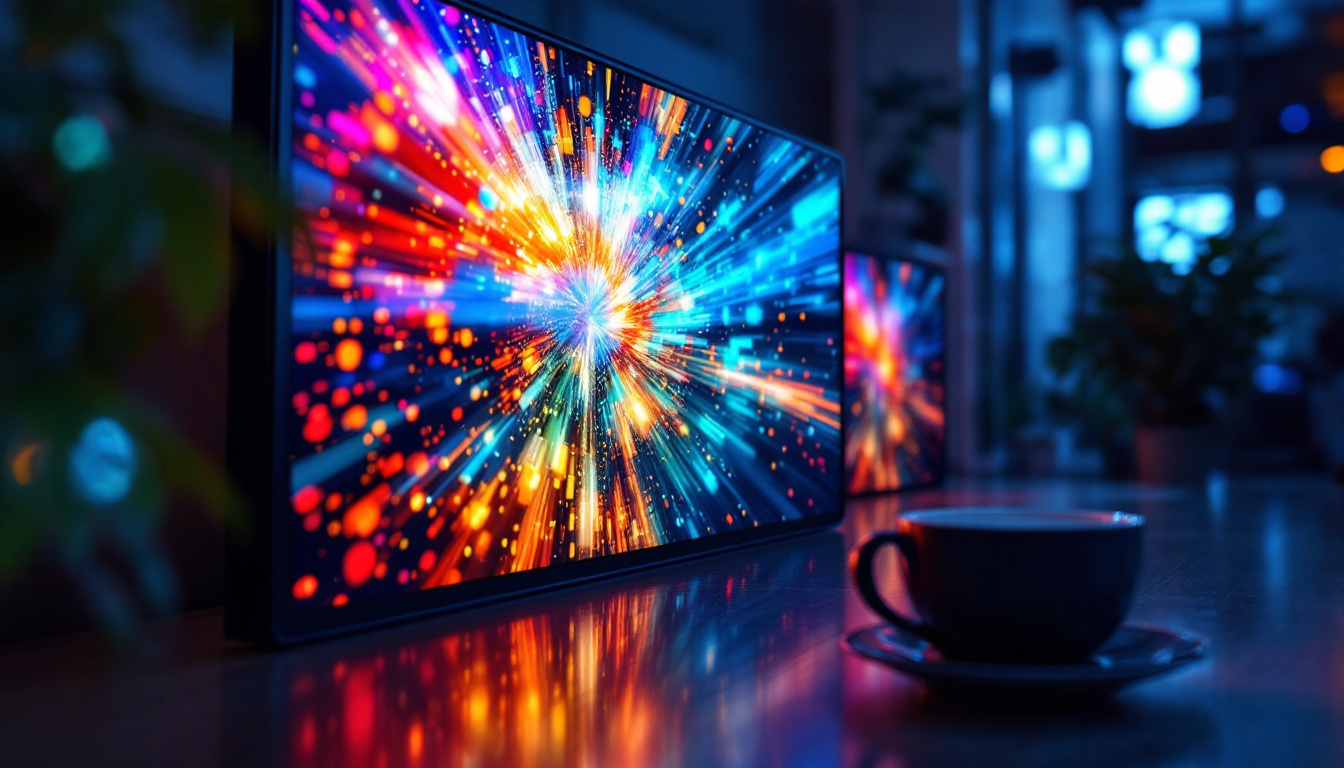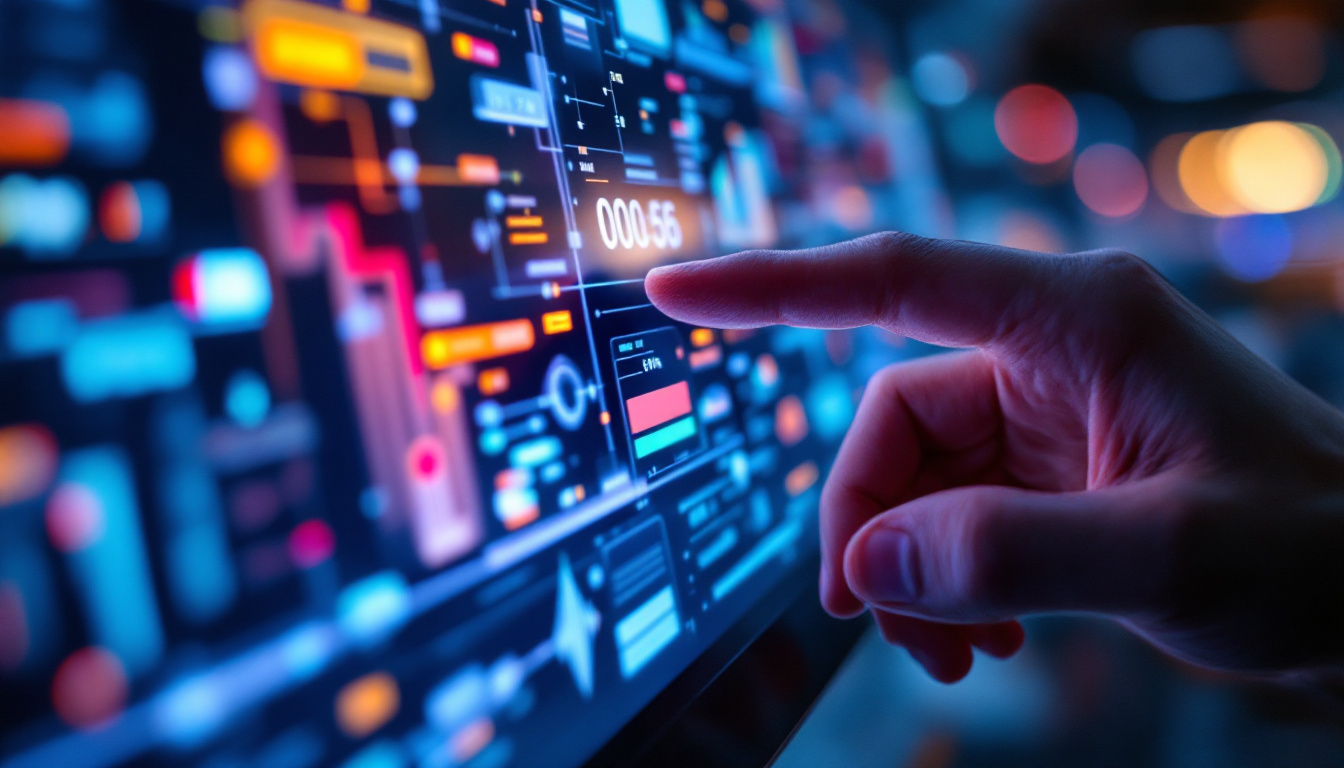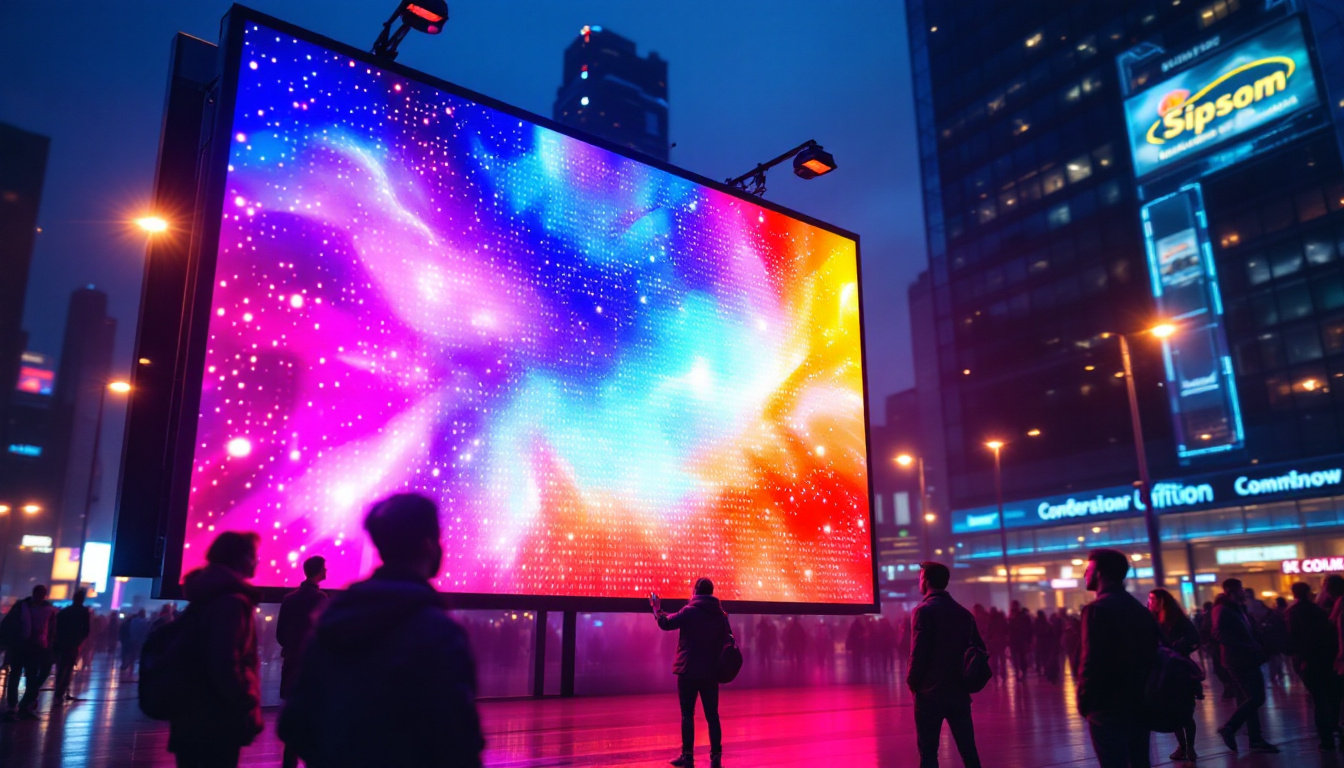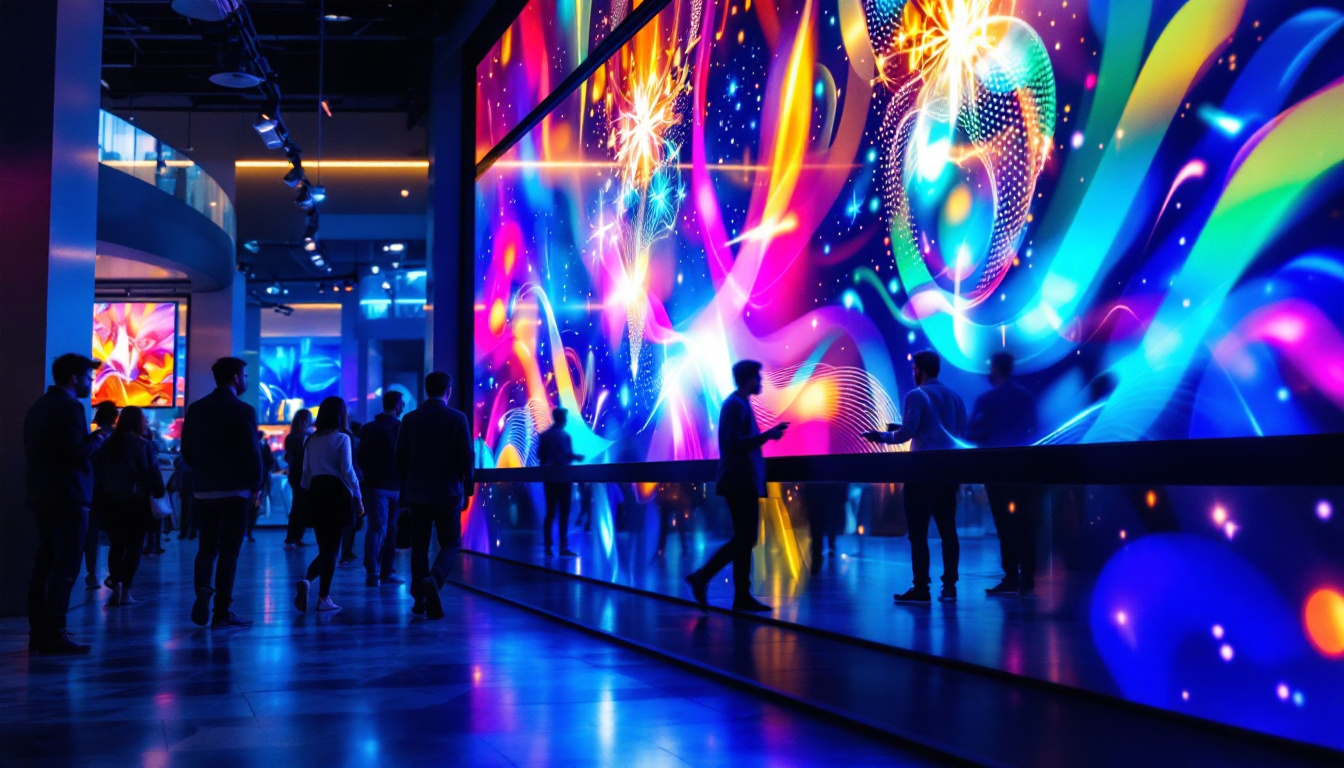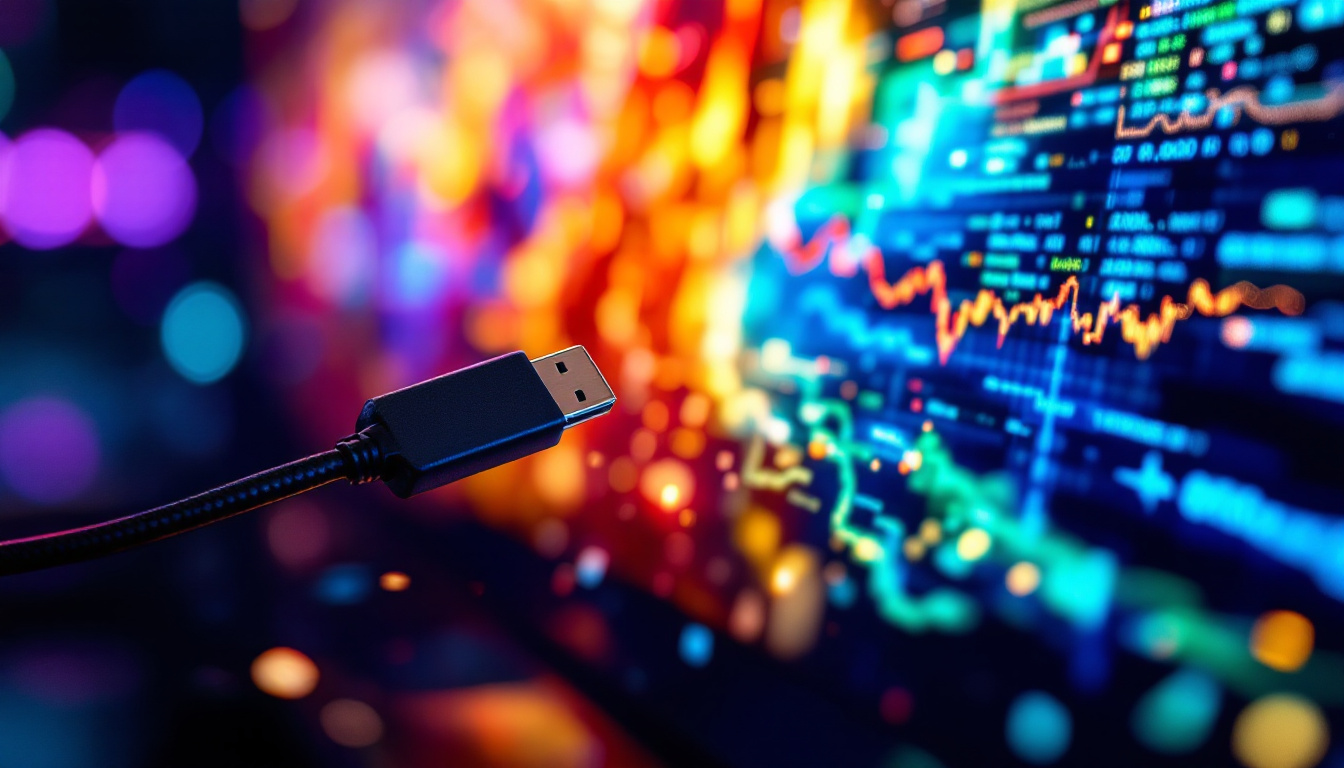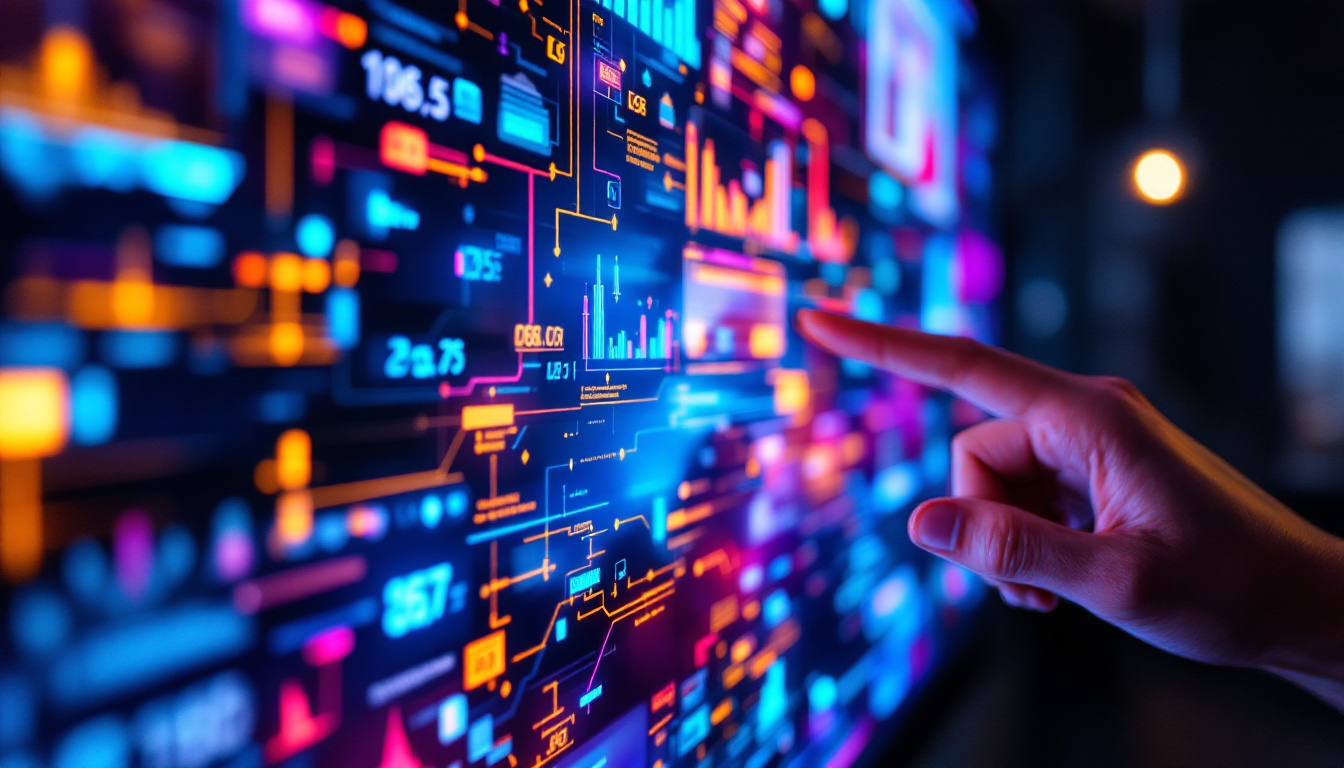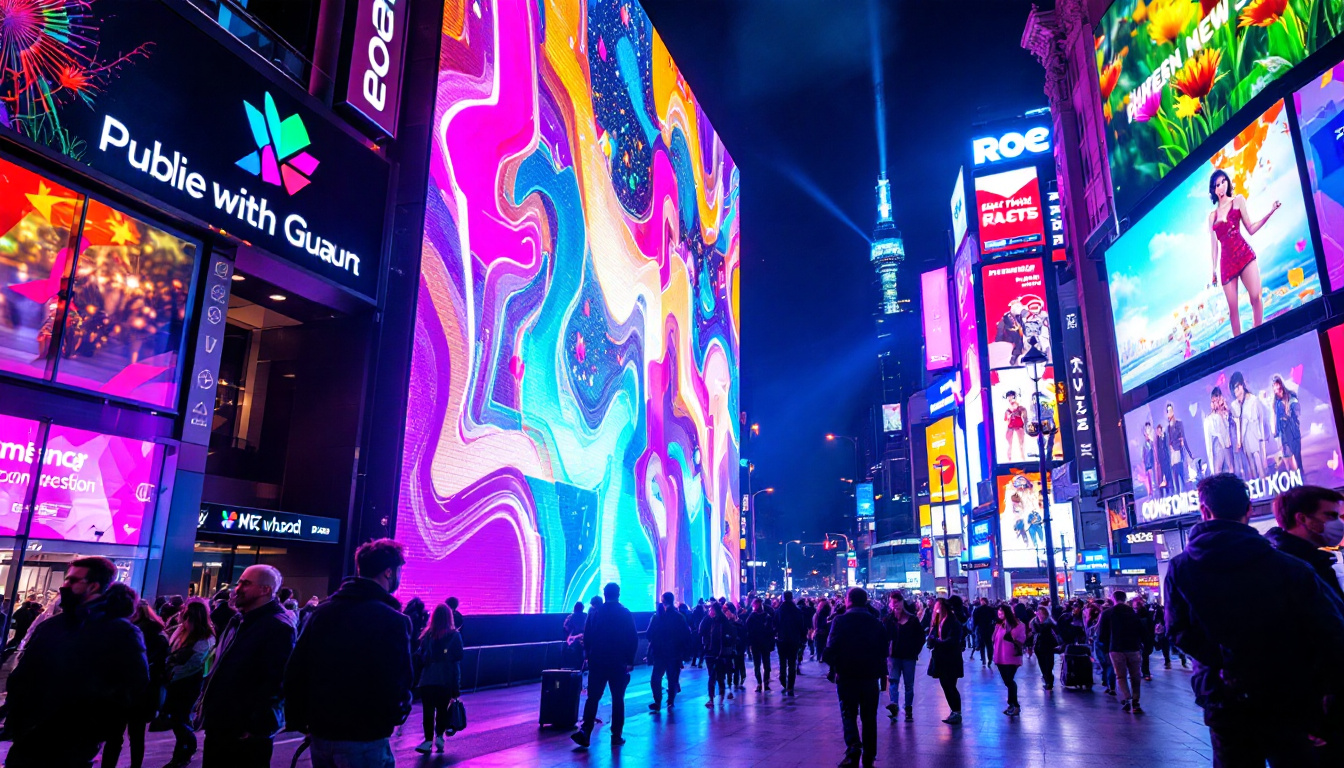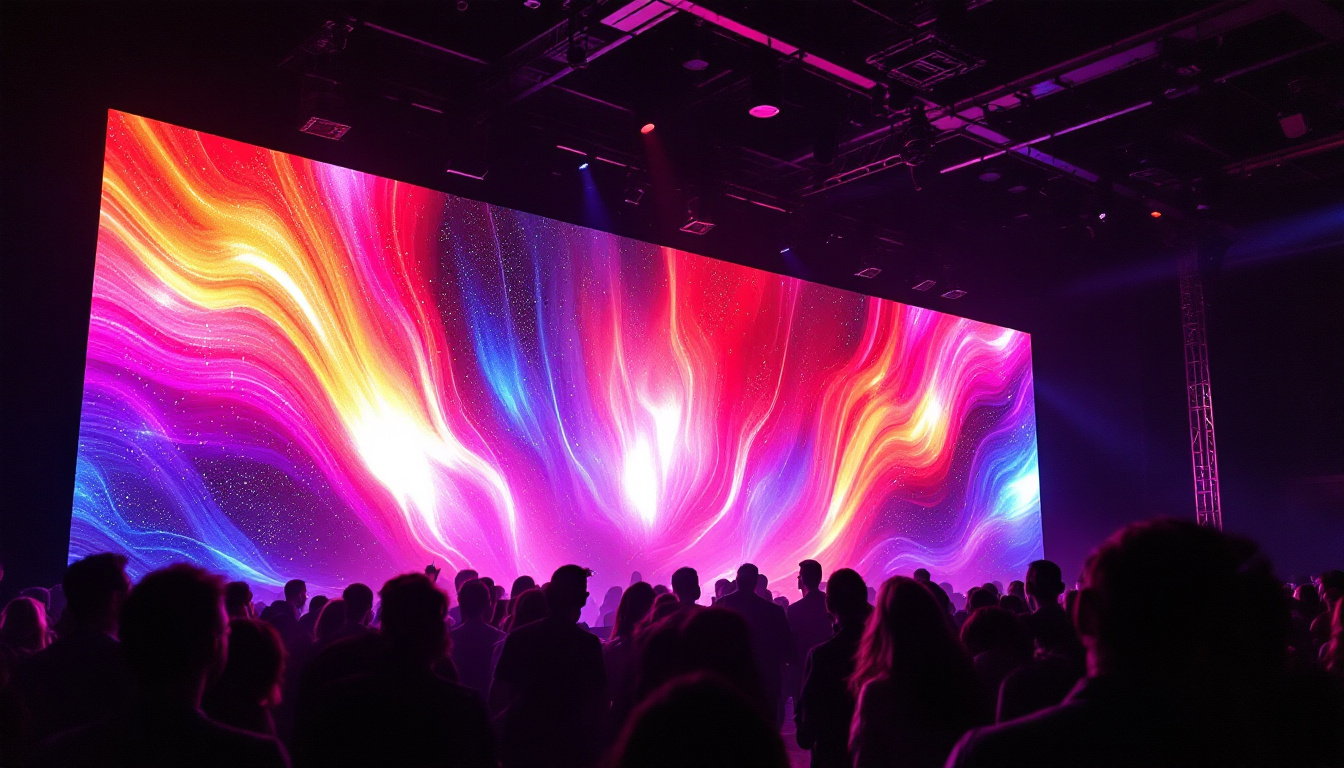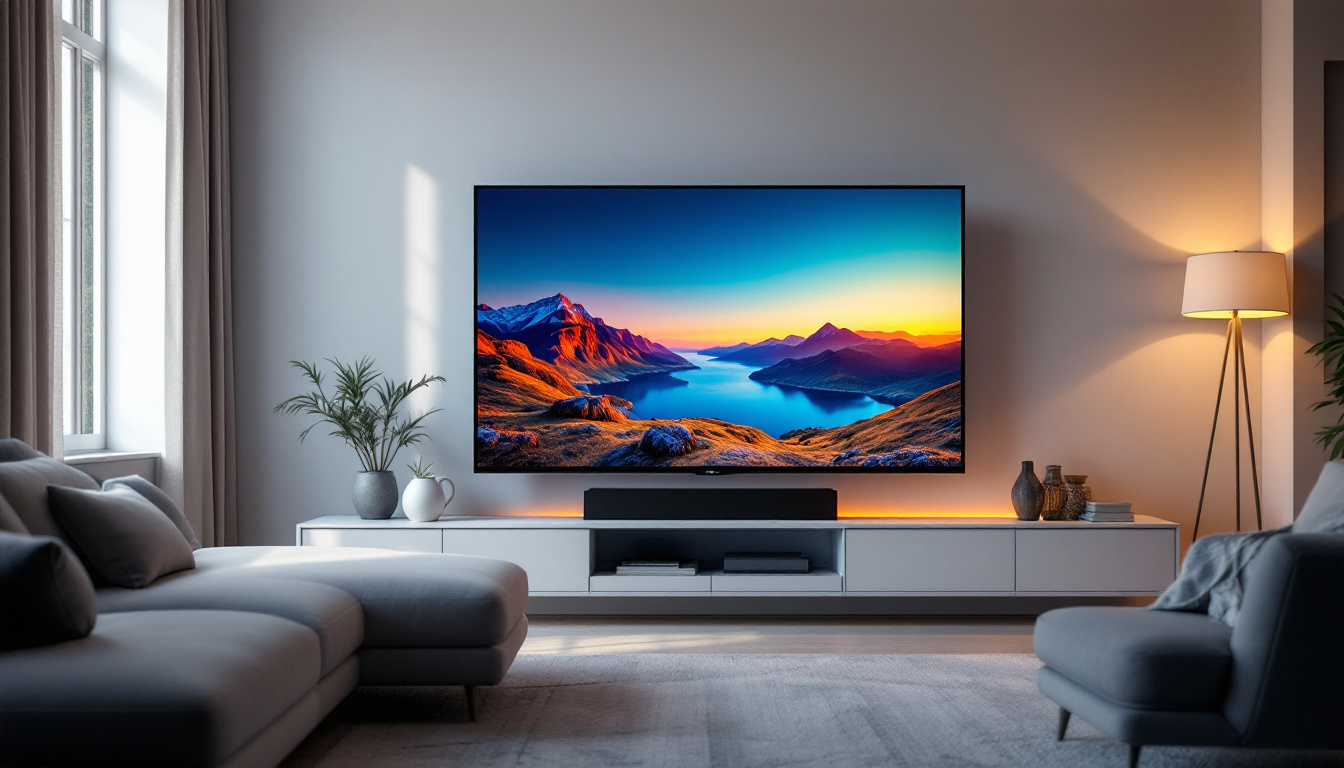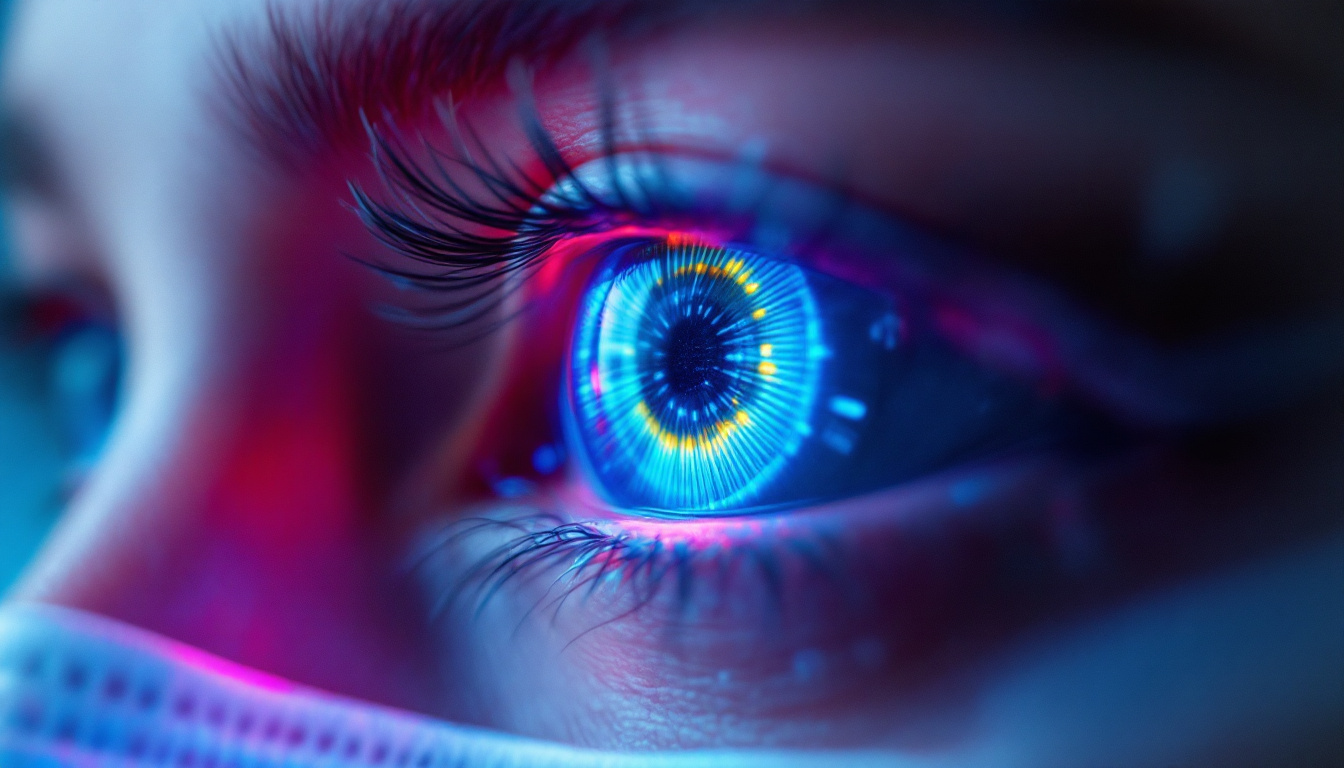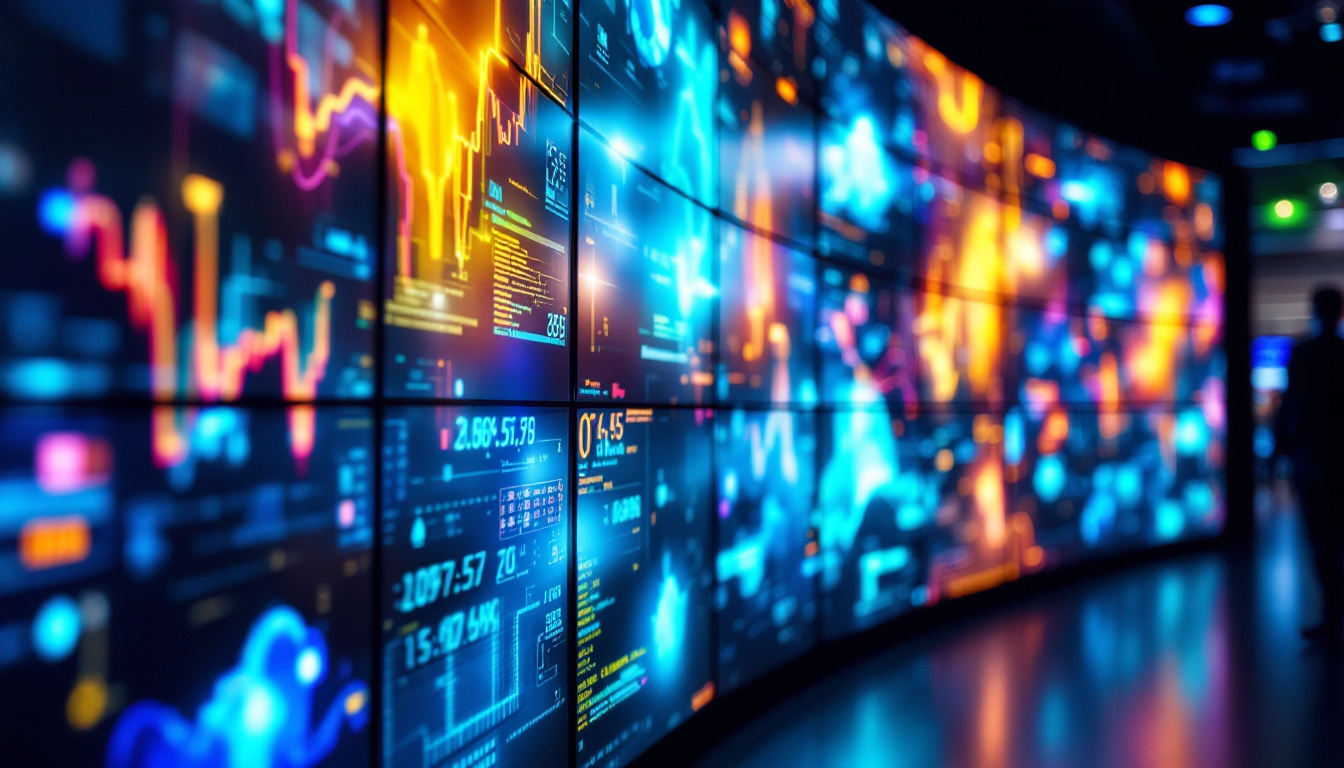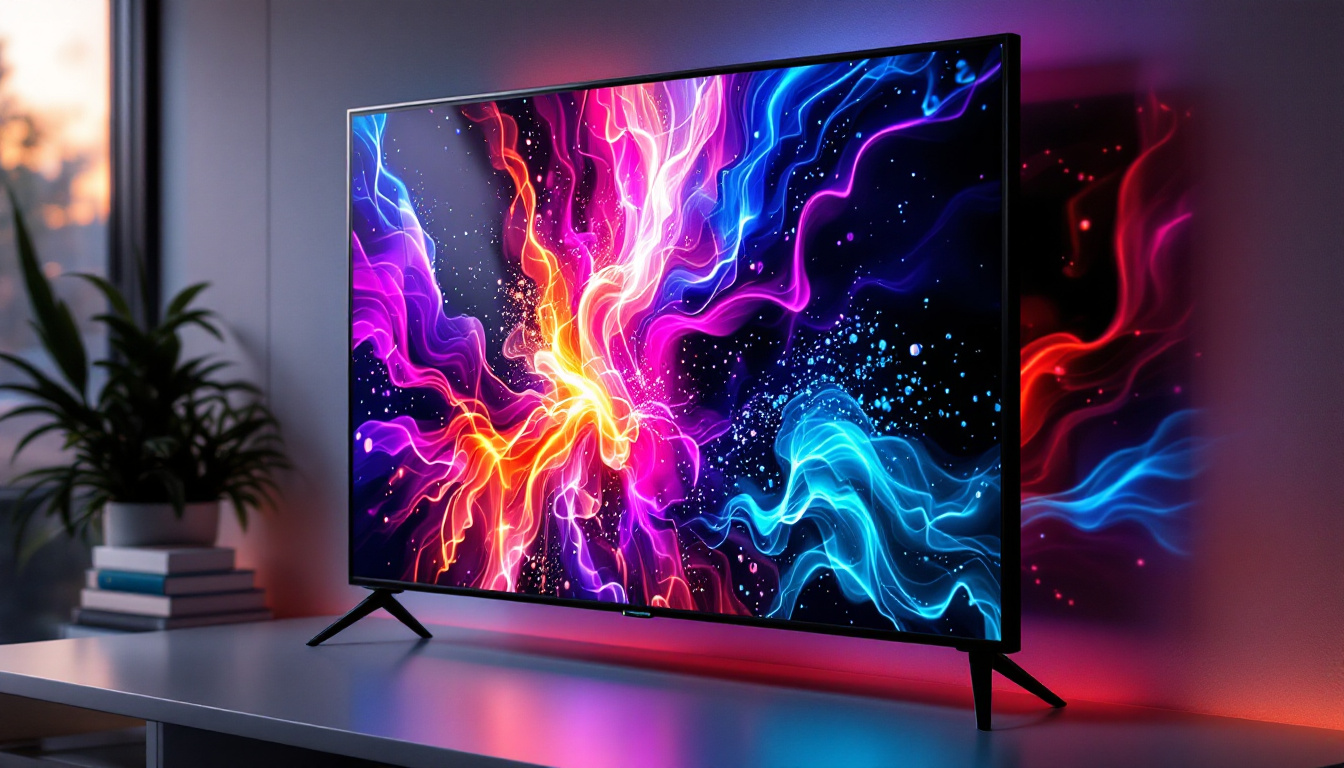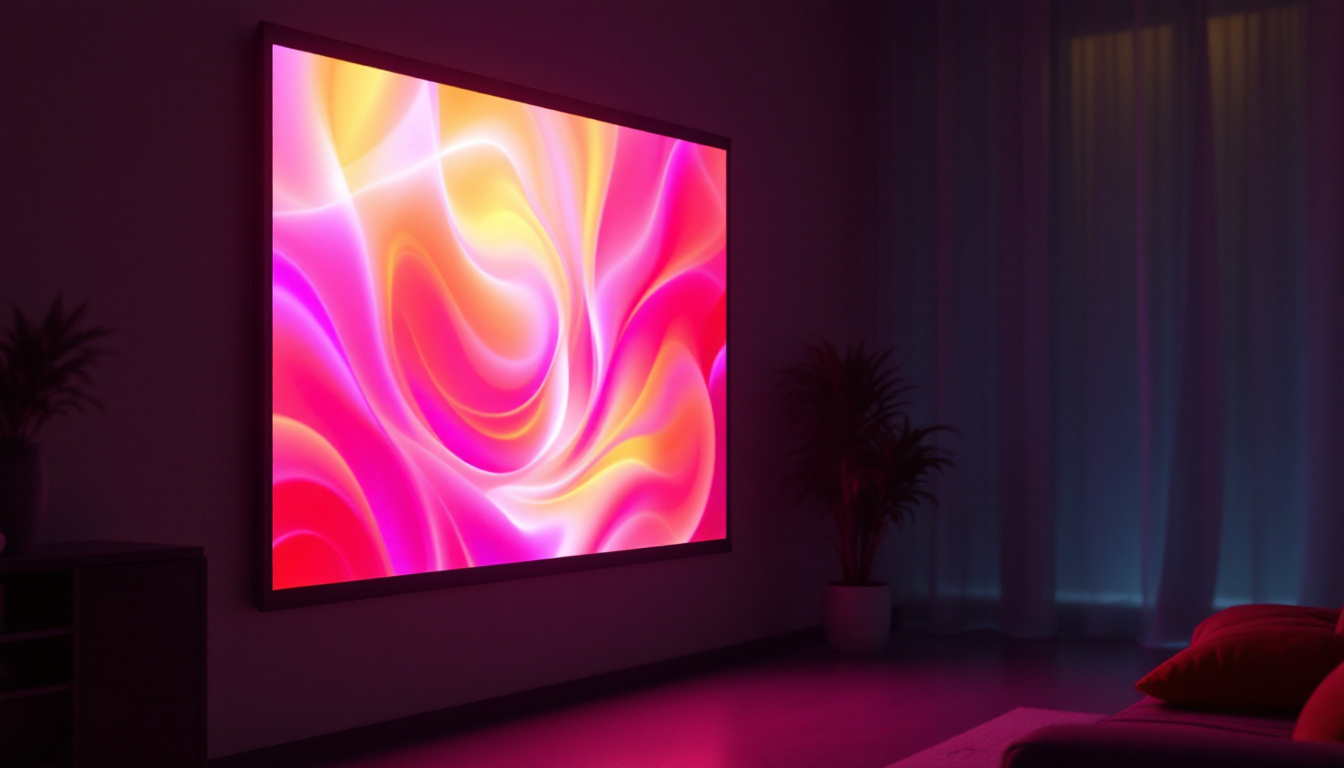In today’s fast-paced world, businesses are constantly seeking innovative ways to capture the attention of their audience. One of the most effective tools for achieving this is the lobby display, particularly in the form of LED screens. These vibrant, dynamic displays serve not only as informational tools but also as powerful marketing assets. This article delves into the various aspects of LED displays, exploring their technology, applications, benefits, and future trends.
Understanding LED Display Technology
LED, or Light Emitting Diode, technology has transformed the way visual information is presented. Unlike traditional displays that rely on backlighting, LEDs emit light themselves, resulting in brighter, more vivid images. This section will cover the fundamental principles behind LED displays and how they function.
How LED Displays Work
At the core of LED display technology are tiny semiconductor devices that convert electricity into light. When an electric current passes through the diode, it emits light in various colors, depending on the materials used in its construction. By combining red, green, and blue LEDs, a full spectrum of colors can be produced, allowing for the creation of stunning visuals.
LED displays are typically made up of multiple pixels, each containing red, green, and blue diodes. The arrangement of these pixels determines the resolution of the display. Higher resolution displays have more pixels, resulting in sharper images and more detailed content. This technology is not only efficient but also highly adaptable, making it suitable for various environments, from small lobbies to large stadiums. Additionally, advancements in LED technology have led to the development of features such as dynamic brightness adjustment and energy-efficient operation, which further enhance their functionality and appeal.
Types of LED Displays
There are several types of LED displays available, each designed for specific applications. The most common types include:
- Indoor LED Displays: These are designed for use in controlled environments, such as lobbies and conference rooms. They typically have a higher pixel density, providing clearer images at closer viewing distances.
- Outdoor LED Displays: Built to withstand weather conditions, outdoor displays are brighter and more durable. They often feature a lower pixel density, as they are meant to be viewed from a distance.
- Transparent LED Displays: These innovative displays allow for visibility through the screen while still showcasing vibrant content. They are ideal for retail environments where product visibility is essential.
In addition to these common types, there are also specialized LED displays such as flexible LED screens, which can be bent and shaped to fit unique spaces, making them perfect for creative installations. Another emerging category is the microLED display, which offers even greater resolution and color accuracy by utilizing microscopic LEDs. These advancements are paving the way for new possibilities in digital signage, entertainment, and even wearable technology, as they become more compact and versatile.
The versatility of LED technology extends beyond mere display types; it also encompasses various applications. From advertising billboards that capture the attention of passersby to large-scale event screens that enhance live performances, LED displays are becoming an integral part of our visual landscape. Furthermore, the integration of smart technology allows for interactive displays that can respond to viewer engagement, creating a more immersive experience. As the demand for high-quality visual communication continues to grow, LED technology is poised to play a pivotal role in shaping the future of digital interaction.
Applications of LED Displays in Lobbies
Lobby displays serve a variety of purposes, enhancing the visitor experience and providing essential information. Their versatility makes them suitable for numerous applications, each tailored to meet specific needs.
Informational Displays
One of the primary uses of LED displays in lobbies is to provide information to visitors. This can include wayfinding maps, event schedules, and company announcements. The dynamic nature of LED screens allows for real-time updates, ensuring that the information displayed is always current and relevant.
For instance, a hotel lobby might use an LED display to showcase check-in times, local attractions, or even weather updates. This not only improves the guest experience but also enhances the overall efficiency of operations. Additionally, these displays can be programmed to highlight special events, such as conferences or community gatherings, ensuring that all visitors are informed and engaged with the happenings around them.
Branding and Marketing
LED displays are powerful tools for branding and marketing. They can be used to showcase promotional content, highlight products, or display corporate messages. The eye-catching visuals produced by LED technology can significantly enhance brand visibility and engagement.
Companies often utilize lobby displays to create a strong first impression. A well-designed LED display can convey the company’s values, mission, and key offerings, helping to establish a connection with visitors right from the moment they enter the lobby. Furthermore, these displays can be integrated with social media feeds, allowing businesses to showcase user-generated content and live updates, which not only promotes engagement but also fosters a sense of community among visitors.
Interactive Displays
As technology continues to evolve, interactive LED displays are becoming increasingly popular in lobbies. These displays allow visitors to engage with the content, whether through touch screens or motion sensors. Interactive displays can provide a more immersive experience, allowing users to explore information at their own pace.
For example, a corporate lobby might feature an interactive display that allows visitors to learn more about the company’s history, view product demonstrations, or even access virtual tours of the facilities. This level of engagement can leave a lasting impression and foster a deeper connection with the brand. Moreover, interactive displays can also collect visitor data, providing valuable insights into audience preferences and behaviors, which can be leveraged for future marketing strategies and enhancements to the visitor experience.
Benefits of Using LED Displays
The advantages of incorporating LED displays into lobby environments are numerous. From enhancing aesthetics to improving communication, these displays offer a range of benefits that can significantly impact a business’s success.
Enhanced Visibility
One of the standout features of LED displays is their brightness and clarity. Unlike traditional screens, LED displays can maintain visibility even in brightly lit environments. This makes them ideal for lobbies, where natural light can often create glare on other types of displays.
The ability to produce vivid colors and high contrast ratios ensures that content remains eye-catching and easily readable, drawing the attention of visitors and passersby alike.
Cost-Effectiveness
While the initial investment in LED technology may be higher than that of traditional displays, the long-term cost savings are significant. LED displays are energy-efficient, consuming less power than conventional lighting solutions. Additionally, their durability means lower maintenance costs and longer lifespans.
As technology advances, the cost of LED displays continues to decrease, making them an increasingly viable option for businesses of all sizes. With the potential for reduced operational costs, investing in LED technology can yield substantial returns over time.
Flexibility and Customization
LED displays offer unparalleled flexibility in terms of content and design. Businesses can easily update and customize the information displayed, allowing for quick changes to marketing messages or event details without the need for physical alterations.
This adaptability is particularly beneficial for companies that frequently change their offerings or promotions. With LED technology, the display can be tailored to fit the specific needs of the moment, ensuring that the content remains relevant and engaging.
Future Trends in LED Display Technology
As technology continues to evolve, so too do the capabilities and applications of LED displays. Several trends are emerging that are likely to shape the future of lobby displays and their use in various environments.
Advancements in Resolution
With the demand for higher quality visuals on the rise, advancements in resolution are becoming increasingly important. Ultra-high-definition (UHD) displays are gaining traction, providing even sharper images and more detailed content. This trend is particularly relevant for industries where visual clarity is paramount, such as retail and entertainment.
As manufacturers continue to innovate, the availability of higher resolution displays at competitive prices is expected to increase, making them more accessible to a wider range of businesses.
Integration with Smart Technology
The integration of LED displays with smart technology is another trend that is gaining momentum. Smart displays can connect to the internet, allowing for real-time updates and remote management. This capability enables businesses to control their displays from anywhere, ensuring that content is always current and relevant.
Moreover, the use of data analytics can enhance the effectiveness of lobby displays. By analyzing visitor interactions and engagement, businesses can tailor their content to better meet the needs and preferences of their audience.
Sustainability Initiatives
As environmental concerns continue to grow, sustainability is becoming a key focus for many businesses. LED displays are inherently more energy-efficient than traditional lighting solutions, but manufacturers are also exploring ways to make their products more sustainable overall.
From using recyclable materials in production to implementing energy-saving technologies, the push for sustainability is likely to influence the design and manufacturing of LED displays in the coming years. Businesses that prioritize eco-friendly practices may find that their commitment to sustainability resonates positively with consumers.
Conclusion
Incorporating LED displays into lobby environments offers a multitude of benefits, from enhanced visibility and cost-effectiveness to flexibility and customization. As technology continues to advance, the potential applications for LED displays are expanding, making them an invaluable asset for businesses seeking to engage their audience effectively.
Whether used for informational purposes, branding, or interactive experiences, LED displays can significantly enhance the visitor experience and contribute to a company’s overall success. As trends evolve and new innovations emerge, the future of lobby displays looks promising, paving the way for even more exciting possibilities in the world of visual communication.
Discover LumenMatrix LED Display Solutions
Ready to elevate your lobby space and captivate your audience with cutting-edge LED display technology? LumenMatrix is at the forefront of creating immersive visual experiences that transform environments and engage viewers. Explore our comprehensive range of LED display solutions, including Indoor and Outdoor LED Wall Displays, Vehicle LED Displays, LED Poster Displays, LED Sports Displays, Floor LED Displays, Custom LED Displays, All-in-One LED Displays, and LED Transparent Displays. Embrace the future of visual communication with LumenMatrix and make a lasting impression. Check out LumenMatrix LED Display Solutions today and see how we can help you share your message with impact and clarity.

